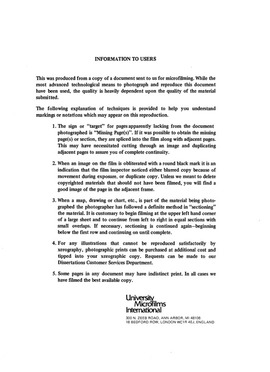| dc.contributor.author | Satake, Akio, | en_US |
| dc.date.accessioned | 2013-08-16T12:28:14Z | |
| dc.date.available | 2013-08-16T12:28:14Z | |
| dc.date.issued | 1980 | en_US |
| dc.identifier.uri | https://hdl.handle.net/11244/4782 | |
| dc.description.abstract | The second problem is concerned with the natural convection of a laminar incompressible Newtonian Fluid in enclosures. Here the divergence-free condition on the velocity field is treated as a constraint. The penalty function method was employed to formulate the problem, and the finite element method was used to solve the problem numerically. A finite element based on the stream function-vorticity formulation was also developed to assess the accuracy and computational simplicity of the penalty-finite element developed herein. The study indicates the penalty-finite element is computationally less expensive, while yielding competitively (or better) accurate solutions for moderately high Rayleigh numbers ((LESSTHEQ) 10('6)). Extension of the present work to time dependent and three dimensional flows is of great interest to industry. | en_US |
| dc.description.abstract | The first problem is concerned with elastic-plastic torsion of a bar subjected to terminal twisting couples. Here the yield criterion of plasticity imposes inequality constraints on the gradient of the stress function. The variational inequality approach was used in the formulation and numerical solution of the problem. The present study concludes that the variational inequality approach is numerically accurate and computationally efficient. Several noncircular and nonrectangular cross section bars were used to show the stress contours and elasto-plastic interface as a function of the twisting couple. Application of the method to two- and three-dimensional elasto-plastic problems is awaiting. | en_US |
| dc.description.abstract | A large number of problems in engineering science involve the solution of differential equations subject to some subsidiary conditions, called constraints (of equality or inequality type). While the derivation of the governing equations is not unduly difficult, it is considerably more difficult to analyze problems with constraints. Most practical methods of analysis are based on unconstrained minimization techniques, such as the Lagrange multiplier method and the penalty function method. These techniques transform a given constrained minimization problem into a set of unconstrained minimization problems. In the practical implementation of these methods, one encounters problems in terms of computer storage, computational time, and more importantly numerical instabilities. The present study is concerned with alternate formulation of two practically important problems which have received great interest of researchers. The novelty of the present work lies in the use of the finite element method in conjunction with variational inequality approach and penalty function method. | en_US |
| dc.format.extent | xiv, 112 leaves : | en_US |
| dc.subject | Engineering, Mechanical. | en_US |
| dc.title | Numerical analysis of certain constrained optimization problems in nonlinear mechanics. | en_US |
| dc.type | Thesis | en_US |
| dc.thesis.degree | Ph.D. | en_US |
| dc.thesis.degreeDiscipline | School of Aerospace and Mechanical Engineering | en_US |
| dc.note | Source: Dissertation Abstracts International, Volume: 41-06, Section: B, page: 2284. | en_US |
| ou.identifier | (UMI)AAI8027530 | en_US |
| ou.group | College of Engineering::School of Aerospace and Mechanical Engineering | |
